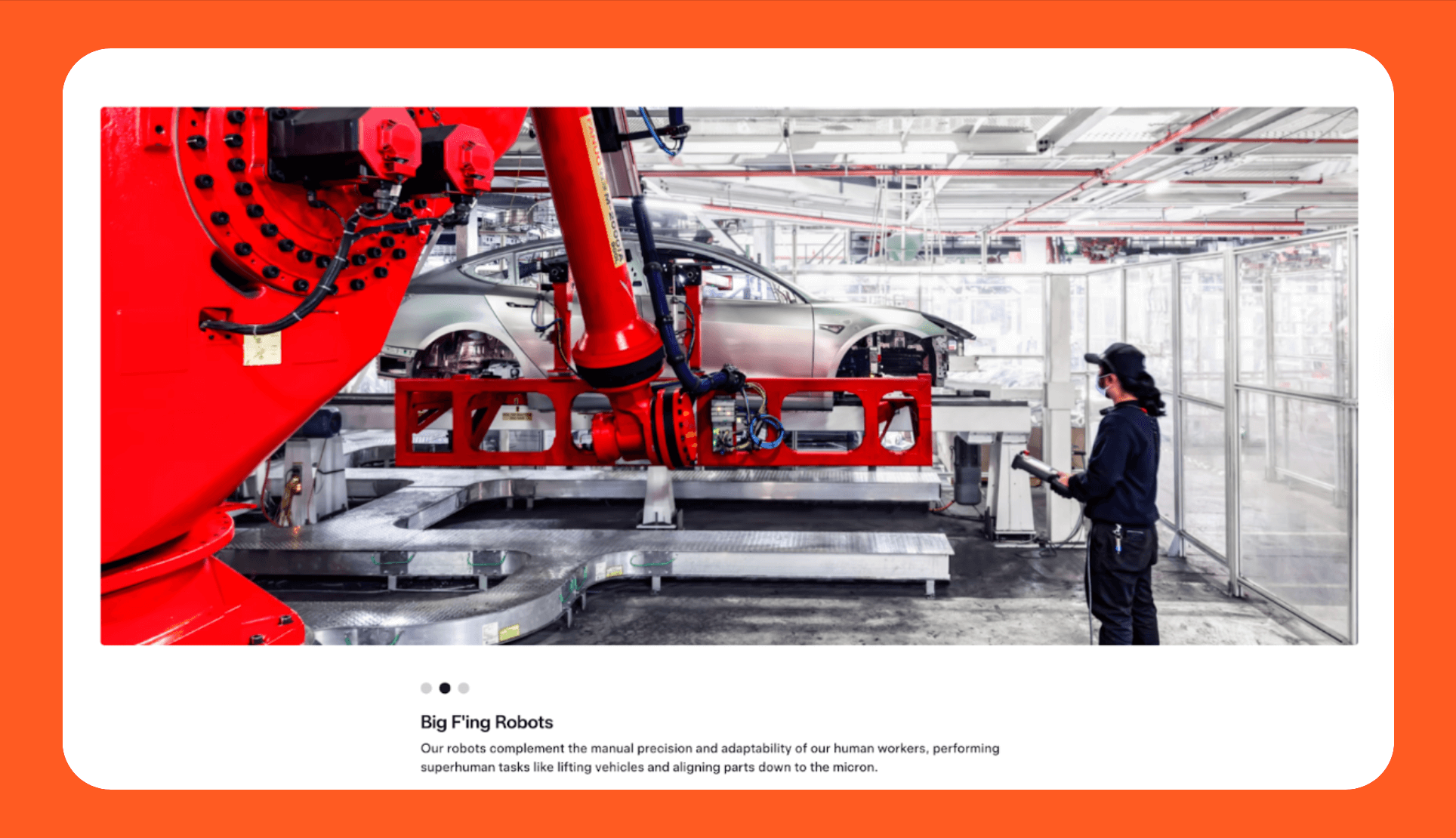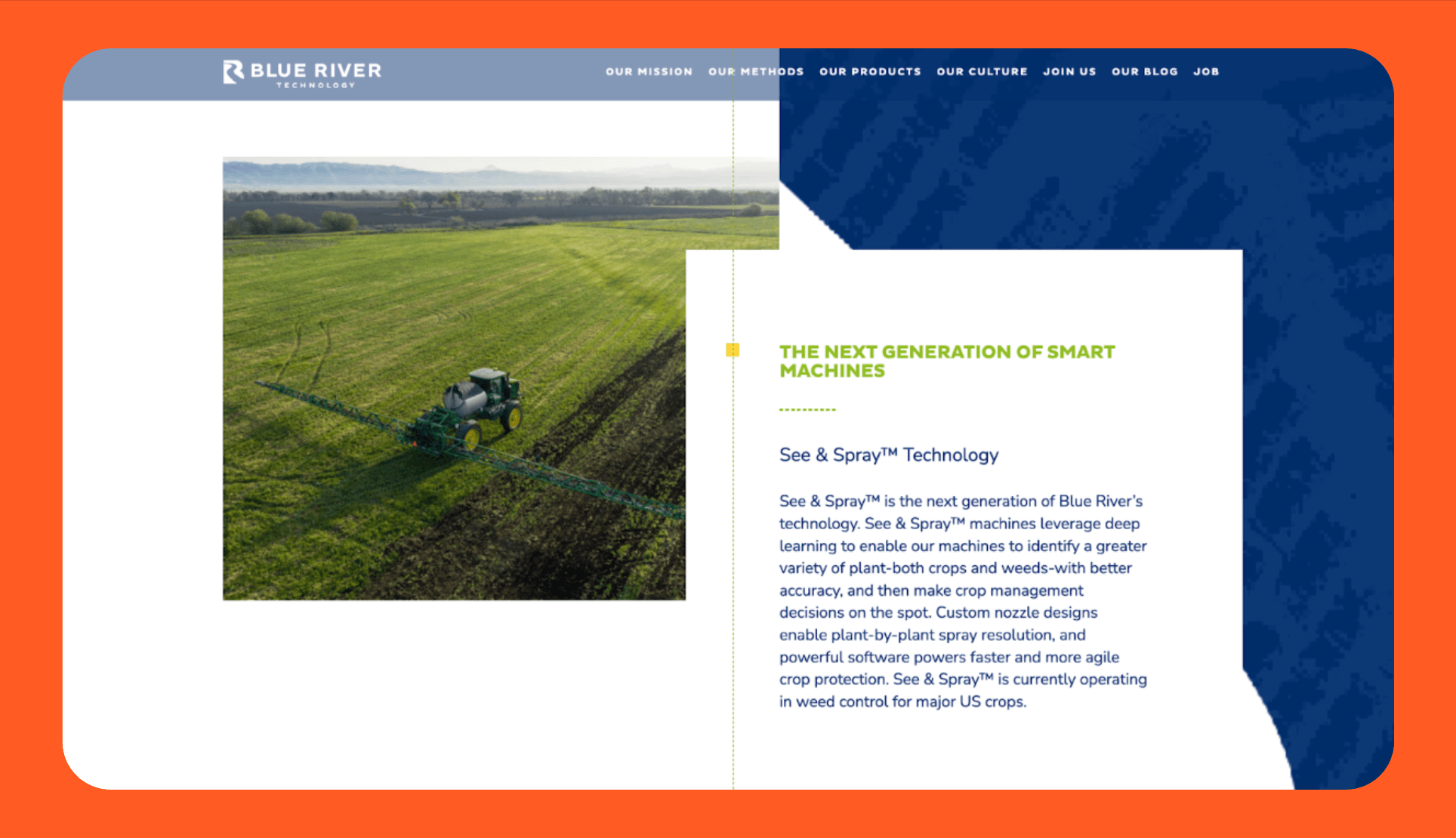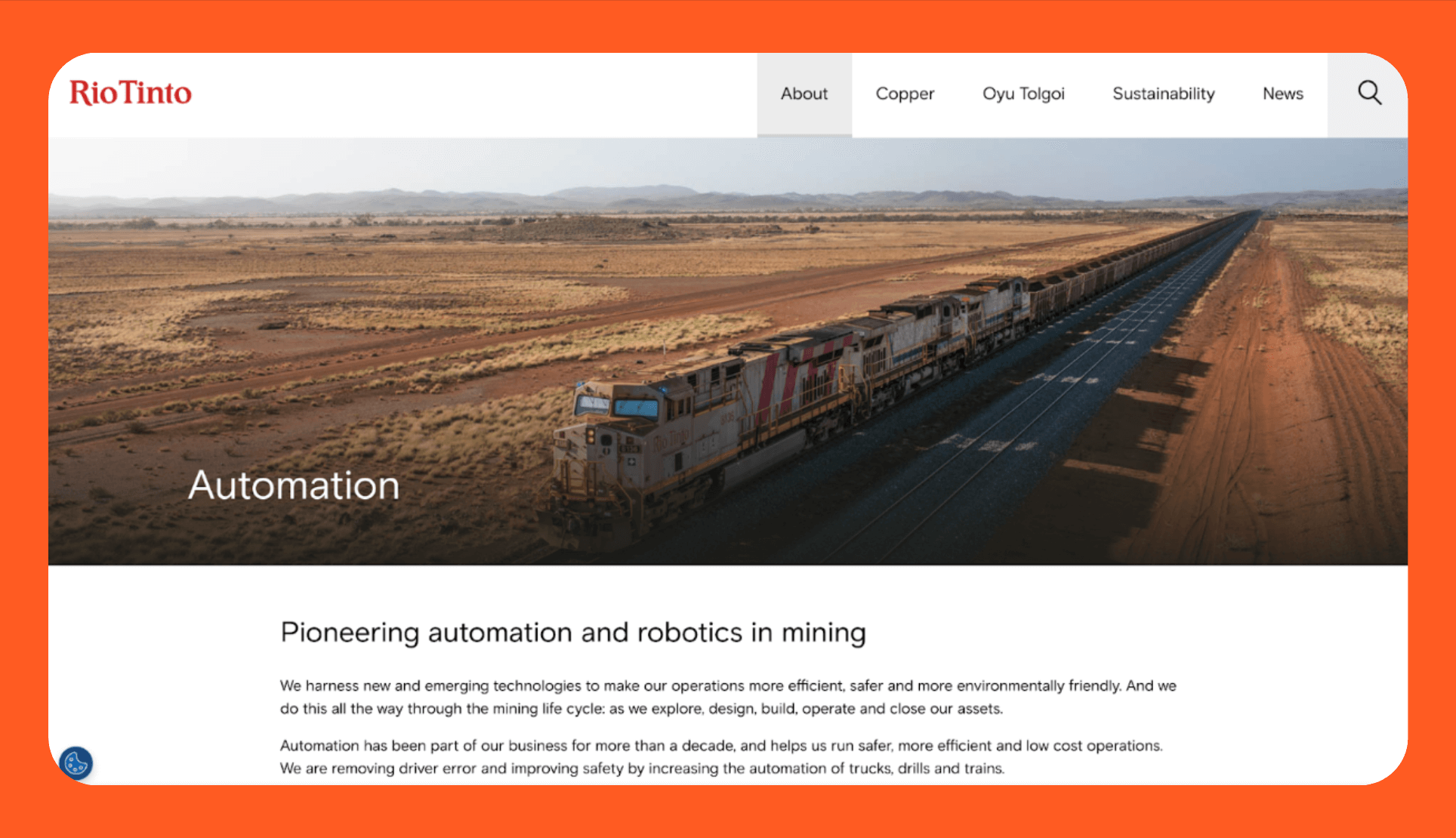Autonomous robots can think, learn, and act independently, with no human puppeteers required.
They use sensors, artificial intelligence, and decision-making systems to adapt to their environment without constant human control. Unlike traditional industrial robots locked into repetitive programming, autonomous robots can learn, navigate, and make real-time choices.
In 2026, adoption is accelerating at an unprecedented pace. Rising labor shortages, the push for safer workplaces, and the demand for higher efficiency are driving industries to integrate autonomous robotics into their operations.
What is an autonomous robot?
An autonomous robot is an intelligent machine capable of performing tasks and making decisions independently, without direct or continuous human control. Unlike traditional robots that follow pre-programmed paths in controlled settings, autonomous robots can adapt to dynamic and unpredictable environments.
A closer look at the facts about robots shows that autonomy is more than just automation. It adds flexibility and safety, giving robots the ability to take on tasks once thought impossible without human involvement. At their core, autonomous robots rely on three essential capabilities that allow them to function independently.
These include:
- Perception: The ability to collect data through cameras, lidar, ultrasonic sensors, or other inputs to build an understanding of the environment
- Decision-making: Using onboard processors and AI algorithms, the robot evaluates options and chooses the best course of action
- Actuation: Motors, arms, or wheels that carry out the chosen actions, whether that’s moving, assembling, or manipulating objects
Beyond these basics, advanced autonomous robots demonstrate:
- Adaptability: Adjusting to new environments, obstacles, or workflows without the need for reprogramming
- Learning: Applying machine learning or reinforcement learning to improve accuracy and efficiency over time
- Sensor Fusion: Integrating inputs from multiple sensors for more precise navigation, better object recognition, and safer decision-making
Core benefits of autonomous robots
The core benefits of autonomous robots include improving productivity, increasing workplace safety, reducing long-term costs, and generating valuable data for decision-making. These advantages explain why industries worldwide are investing in autonomy to boost resilience and performance, making robots essential partners in operations.
The key benefits include:
- Enhanced efficiency and productivity: Autonomous machines can operate continuously without fatigue, boosting throughput and reducing delays. In manufacturing and logistics, they speed up assembly, picking, and delivery tasks while maintaining consistent quality.
- Safety and risk mitigation: Robots take on hazardous tasks in environments that are unsafe for humans, such as high-temperature zones, heavy lifting, or toxic conditions. Companies now see robots as collaborators that handle dangerous tasks while people focus on higher-value work.
- Cost savings and ROI: While upfront investment can be significant, the long-term return is clear. Reduced labor costs, fewer errors, and lower accident-related expenses lead to strong financial gains.
- Streamlined processes and data intelligence: Autonomous robots gather and analyze data as they work. This information helps businesses identify inefficiencies, optimize workflows, and make better-informed decisions.
Applications across industries
Applications of autonomous robots span industries from manufacturing and logistics to healthcare, agriculture, retail, and construction. These machines handle repetitive, dangerous, and data-intensive work faster and more accurately than humans.
By supporting tasks across diverse environments, they allow humans to focus on higher-value activities while improving safety and efficiency.
- Manufacturing and warehousing: In manufacturing and logistics, autonomous mobile robots (AMRs) move raw materials, parts, and finished products efficiently across the floor. Robotic arms handle repetitive assembly tasks with high accuracy, while automated storage and retrieval systems streamline inventory management, reducing downtime and minimizing errors.
- Healthcare: Hospitals are increasingly using robots to assist staff by transporting medicines, surgical tools, and laboratory samples, allowing healthcare professionals to focus on patient care. Surgical systems like the da Vinci robot provide greater precision and faster recovery for patients, while disinfection robots help maintain sterile environments.
- Agriculture: Autonomous drones monitor crops for health, hydration, and pest infestations, providing real-time data to farmers. Ground-based robots such as smart tractors and weeding systems apply fertilizers and pesticides with pinpoint accuracy, cutting costs, improving yields, and reducing environmental impact.
- Retail and hospitality: The rise of service robots is changing how hotels and stores operate. In hotels, robots deliver items to rooms, guide guests through facilities, and provide concierge-style support. In retail, shelf-scanning robots track stock levels in real time, so staff can restock faster and avoid lost sales from empty shelves.
- Construction and infrastructure: Robots are reshaping construction by surveying sites with precision, producing 3D maps, and performing repetitive but critical tasks like bricklaying and welding. Inspection robots are also deployed in infrastructure projects to evaluate bridges, tunnels, and pipelines, reducing risks for human workers in hazardous environments.
- Mining and autonomous transport: Fleets of self-driving trucks and drilling machines now handle heavy-duty work in mines and likewise environments. They operate around the clock, improving accuracy and cutting downtime while keeping people out of hazardous areas.
Challenges and considerations
The challenges and considerations of adopting autonomous robots range from high upfront investment to safety regulations and workforce concerns. Companies must address integration costs, cybersecurity risks, and reskilling requirements.
Understanding these hurdles is critical for successful deployment and long-term value creation, especially in industries facing fast-changing automation demands.
The main challenges include:
- Implementation hurdles: Robots require significant upfront investment in hardware, software, and integration. Maintenance and employee training add to the cost, and smaller companies may find adoption slower without the right technical support.
- Regulation and safety concerns: Safety standards and certification requirements are tightening as robots become more autonomous. Questions about liability in case of accidents are still being worked out, and connected robots also introduce cybersecurity risks that can’t be ignored.
- Human-robot collaboration challenges: Workers often worry that robots will replace their jobs. Successful adoption depends on reskilling programs, clear communication, and creating workflows where robots handle repetitive or risky tasks while people take on higher-value work.
Future trends and outlook
The future trends and outlook for autonomous robots point to rapid growth. Advances in AI and sensor technology are making them smarter and more adaptable, while cobots and swarm robotics expand their capabilities. At the same time, workforce evolution will shape how humans and robots collaborate effectively.
Key shifts ahead include:
- AI integration and smarter autonomy: Robots are moving beyond rigid programming to systems that can interpret data, recognize patterns, and adapt to change. This makes them more useful in environments where conditions are unpredictable, such as dynamic warehouses or busy hospitals, where real-time decision-making is critical.
- Swarm robotics and collaborative robots: The future is not just about one robot doing one task. Fleets of robots can now coordinate to cover large areas, while cobots are built to safely share workspaces with people. The line between cobots and industrial robots is becoming more important as companies decide which systems best fit their needs.
- Workforce evolution and upskilling: As automation grows, human work shifts toward managing systems, interpreting data, and problem-solving. Companies that invest in training will benefit most from the mix of human and robotic strengths.
Still, many are weighing the pros and cons of robot automation to decide how fast to adopt and how best to prepare their teams.
Real-world examples
Real-world examples of autonomous robots highlight how leading companies already use them for efficiency, safety, and scale. From Tesla’s robotic assembly lines to Amazon’s mobile fleets, Blue River’s farming drones, and Rio Tinto’s autonomous trucks, these cases show how autonomy delivers measurable results across industries today.
Tesla assembly robots
Tesla relies heavily on robotics to maintain the pace of its vehicle production. Thousands of robotic arms, supplied by companies such as KUKA and FANUC, manage essential tasks including welding, painting, and component placement. These jobs demand accuracy and consistency, and robots handle them more effectively than manual labor.

By automating high-precision work, Tesla reduces variability and defects, ensuring consistent quality across large production runs. Robots also make it possible to keep production lines running around the clock, something human-only teams cannot achieve without significant cost and fatigue.
Even with this automation, humans remain critical to the process. Workers oversee operations, inspect quality, and solve problems that require judgment or flexibility.
Amazon warehouse AMRs
Amazon’s fulfillment centers showcase autonomy on a massive scale. After acquiring Kiva Systems in 2012, the company integrated fleets of autonomous mobile robots (AMRs) into its warehouses. These machines carry shelves of goods directly to workers, eliminating long walks through aisles.

By handling transport, AMRs allow employees to focus on picking and packing orders. The result is faster order processing, fewer mistakes, and the ability to support same-day and next-day delivery. The system also makes denser storage layouts possible, since shelves no longer need to be human-accessible.
Each robot is equipped with sensors and navigation systems that let it operate safely around people. They adjust speed and direction instantly, keeping workflows smooth and safe.
Blue River agriculture drones
Blue River Technology is leading the way in precision agriculture. Its “See & Spray” platform uses smart sprayers powered by computer vision and deep learning to identify weeds with pinpoint accuracy. Instead of treating entire fields, herbicides are applied only where needed.

This targeted approach cuts chemical use by up to 90%, saving money and reducing environmental impact. Farmers gain more control over inputs while improving sustainability. At the same time, this method supports higher yields by ensuring crops receive better care with fewer side effects from blanket spraying.
Beyond weed control, Blue River’s systems gather valuable data on crop health, hydration, and growth trends. Farmers can use these insights to make informed decisions, reduce waste, and optimize harvests.
The da Vinci Surgical System
The da Vinci Surgical System, developed by Intuitive Surgical, is a widely adopted medical robot used in hospitals around the world. In 2026, there are ~9,900 systems installed across ~70 countries, underscoring their broad adoption in modern surgical care. It assists surgeons in performing minimally invasive procedures with unmatched precision.
High-definition 3D cameras and robotic arms give surgeons greater dexterity than conventional tools allow.

Patients benefit from smaller incisions, shorter hospital stays, and faster recovery. Hospitals see fewer complications and readmissions, which improves outcomes and makes procedures more cost-effective. The robot has already been used in millions of surgeries globally, spanning specialties such as urology, gynecology, and cardiology.
Rio Tinto autonomous trucks
Rio Tinto operates one of the largest fleets of autonomous haulage trucks in its Pilbara iron ore mines in Australia. These trucks, equipped with GPS, radar, and lidar, transport ore safely across rugged terrain. Their ability to run around the clock makes them far more efficient than human-driven fleets.

By removing drivers from dangerous sites, the trucks improve workplace safety significantly. Optimized route planning also reduces fuel consumption and lowers emissions, which supports Rio Tinto’s sustainability targets. The scale is equally impressive. Rio Tinto’s autonomous fleet now moves hundreds of millions of tonnes of ore each year, with ~300–400 trucks in operation.
The future of autonomous robots
The future of autonomous robots depends on how well companies balance independence and collaboration. These machines already make operations faster, safer, and more cost-effective, but their greatest impact comes when they work alongside skilled human teams.
Businesses that invest in training and smart integration today will be best prepared to compete as autonomy becomes a normal part of the global industry.
Many of these use cases are also discussed in the robot forum, where industries share insights and lessons learned.
Next steps with Standard Bots
Looking to upgrade your automation game? Standard Bots’ RO1 is the perfect six-axis cobot addition to any robotic setup, delivering unbeatable precision and flexibility.
- Affordable and adaptable: RO1 costs $37K (list price). Get high-precision automation at half the cost of traditional robots.
- Precision and power: With a repeatability of ±0.025 mm and an 18 kg payload, RO1 handles even the most demanding CNC jobs.
- AI-driven simplicity: Equipped with AI capabilities on par with GPT-4, RO1 integrates seamlessly with CNC systems for advanced automation.
- Safety-first design: Machine vision and collision detection mean RO1 works safely alongside human operators.
Schedule your on-site demo with our engineers today and see how RO1 can bring AI-powered greatness to your shop floor.
FAQs
1. Are autonomous robots expensive?
Autonomous robots are expensive, with costs ranging between $25,000 and $500,000 or more, depending on type and complexity. A basic collaborative robot starts around $25,000, while full industrial automation systems can exceed $500,000. Advanced humanoid AI robots now sell for over $200,000.
2. What tasks can they handle in small businesses?
Autonomous robots can handle a wide range of tasks in small businesses. They improve safety, boost efficiency, support inventory management, and even help in agriculture by monitoring crops. On the operations side, they’re used in warehousing, manufacturing, material transport, pallet moving, assembly, and welding, all of which reduce repetitive work.
3. What traits define a reliable autonomous robot?
A reliable autonomous robot is defined by accurate sensors, consistent decision-making, and built-in safety features. It should adapt to new environments, use durable hardware, integrate easily with existing systems, and require little maintenance to deliver dependable, long-term performance. Another key trait is scalability, so it can grow with business needs.
4. Can they work with human teams safely?
Autonomous robots can work with human teams safely when designed with the right features. Most include advanced sensors, vision systems, and collision detection to avoid accidents.
Collaborative robots, or cobots, go further with built-in force limits and emergency stop functions. Safety also depends on proper training and clear workflows so people and robots can operate side by side without risk.
5. What future developments should we expect?
Future developments in autonomous robots will focus on enhanced autonomy, real-time adaptation, and smarter decision-making powered by AI and advanced sensors. These advances will help robots navigate complex environments and collaborate more effectively with humans.
Expanded use is expected in healthcare, agriculture, and logistics, alongside the rise of swarm robotics for collective tasks. Stronger connectivity and clearer regulations will also shape adoption, addressing challenges such as job displacement and ethical concerns.
brighter future
Join thousands of creators
receiving our weekly articles.







.png)


